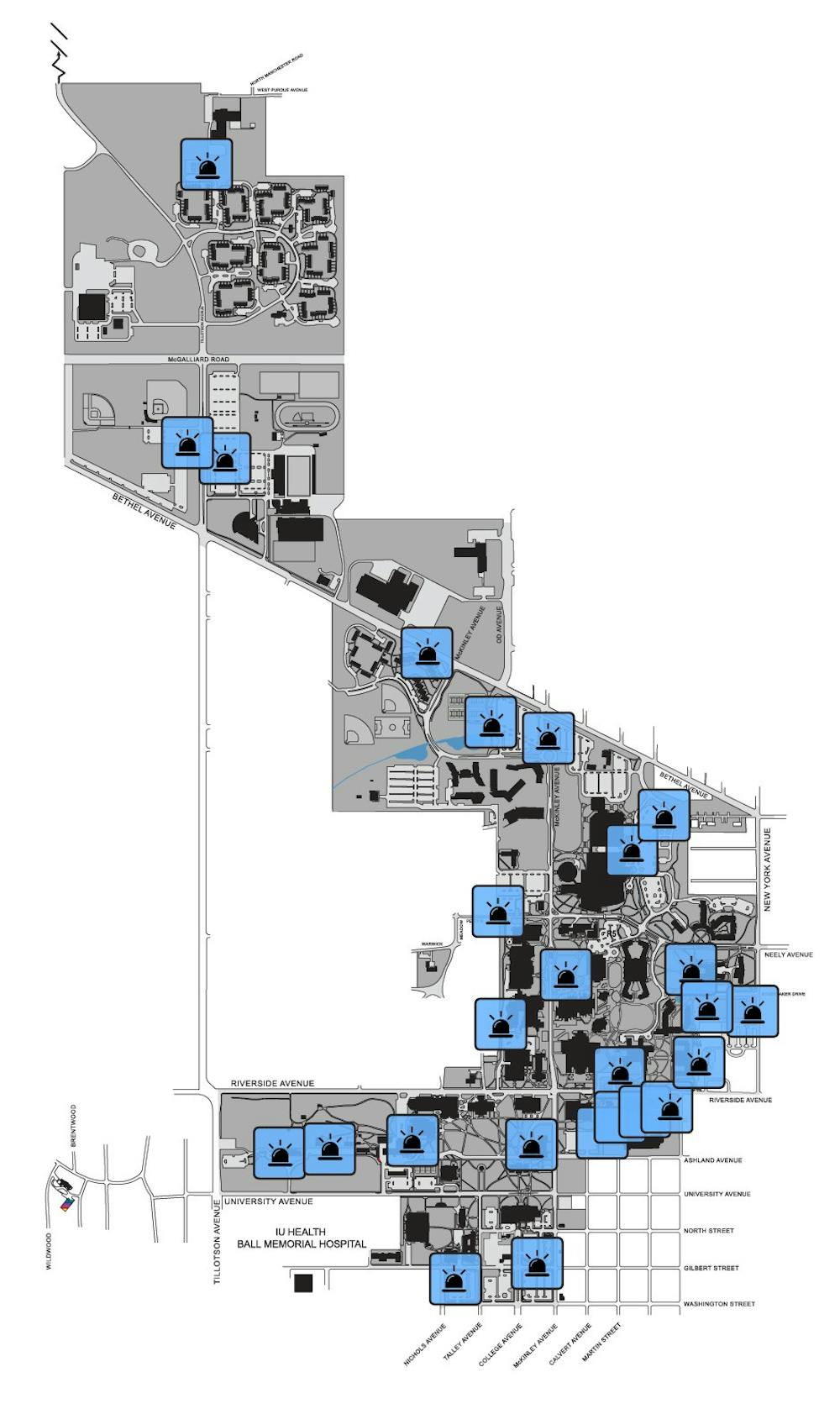Jeanne Clery was a first-year student at Lehigh University in Pennsylvania.
In 1986, a police report was filed stating Clery was raped and murdered in her dormatory. Before this incident, 38 violent crimes occurred prior to her death on the campus, according to The Lehigh University Police Department website.
Four years later, legislation for the Clergy Act was passed and showed there were a lot of safety issues on college campuses.
According to 911 cellular, The University of Illinois at Chicago took action and talked to inventors about more safety a year before the Clergy Act
This led to the creation of the blue light phone, created by the News-Time company.
By the mid-1990s, the University of Illinois had 100 phones around campus, and later, multiple schools started to add them to their properties. One of those schools was Ball State University.
Blue Lights are for students to get in touch with the Ball State University Police Department (UPD) when they need assistance. To use them, one presses the button and speaks, but if nothing is said, officers are still sent to check out the area.
Using the phones has the same response time as calling 911, Greg Fallon, Ball State’s chief digital marketing and communications director, said via email.
“University Police routinely test the blue light emergency phones to ensure they are fully operational,” he said via email. “Doing so dramatically increases the number of times they are ‘used’ in an academic year. But in terms of them being used in a time of true emergency, it happens infrequently.”
He said they are more commonly used in non-emergencies, and in true emergencies, people usually use cell phones.
Fallon added that Ball State currently has no plans of installing more to the current 28 phones, but that doesn’t mean it won’t be considered in the future. He also mentioned the phones are placed in strategic areas, and it would be hard to install them in all corners of Ball State’s 1,200 acre campus.
Indiana University-Bloomington also has a similar type of device to the blue phones.
“We have keypads on them, but still it works like a telephone,” Leslie Slone, assistant director for safety and security for the university, said. “So there's a whole lot of engineering and digging and wiring for those things.”

University Police Department officers are an on-campus source for help. An officer is assigned to each residence hall to encourage a positive relationship with the department. Kaiti Sullivan, DN File
Around 2012, Indiana University added a rule to their safety codes. Once a building or new development is built, these blue lights are added near the entrance.
“We take input from students and visitors on campus,” Slone said. “I mean, anybody can give us input. It's like, ‘I was walking over here by this parking garage, and it was really creepy,’ and we take that into consideration.”
Slone also said the 72 phones, or towers as they are called at Indiana University, are not just for crime but also for everyday issues. For example, people can use them to get assistance if their car is not working or their phone is dead.
“So that's not really a personal safety emergency,” Slone said. “Everybody thinks a bad guy is gonna jump out from the bushes or something, but it's an emergency, and if you're in it, you need that help, and that's just a good way to get it.”
At the end of the day, Slone said the goal is not only for students to feel safe but for their parents to feel comfortable too.
“Parents will come in, and they'll see the blue light phones,” she said. “They'll know that the university is doing real, tangible things to enhance the safety of their kids while they're on campus, and you can't put a price tag on that.”
Ball State’s Student Government Association (SGA) has worked with the blue light phones on Ball State’s campus in the past. Despite blue light phones, the association's president, Tina Nguyen, agrees cell phones are the best option.
“The best investment is to have your phone 24/7,” she said. “They have more algorithms, like tracking.”
SGA’s Chair of the Off-Campus Caucus and Chair of the Safety Committee, third-year Ball State student Clarissa Carrigann, believes Ball State needs more blue light phones.
“There are multiple places on campus that I believe need more blue lights,” she said via email. “These include the North resident halls and dining and campus apartment complexes.”
She also believes areas not technically on campus need more. These areas include The Village– more specifically outside of Brothers or Roots– and on fraternity row.
Contact Zach Carter with comments at zachary.carter@bsu.edu or on Twitter @ZachCarter85.





